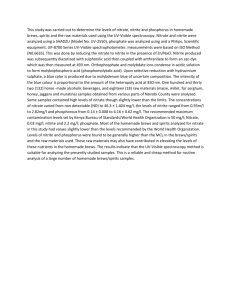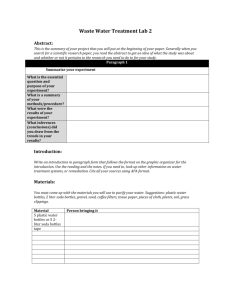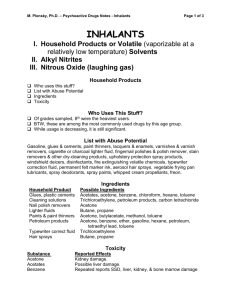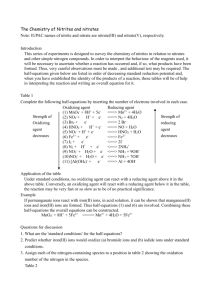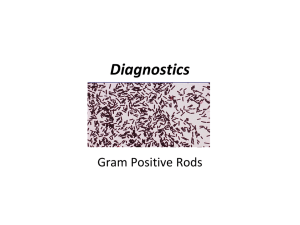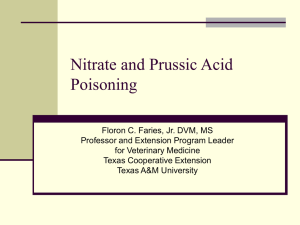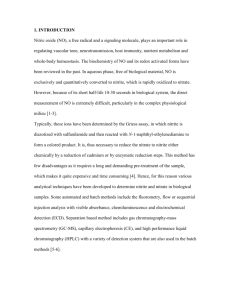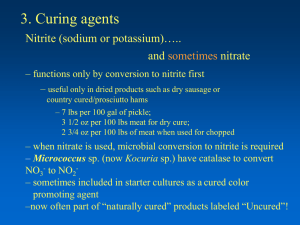Nutrients Method Summary - C-MORE
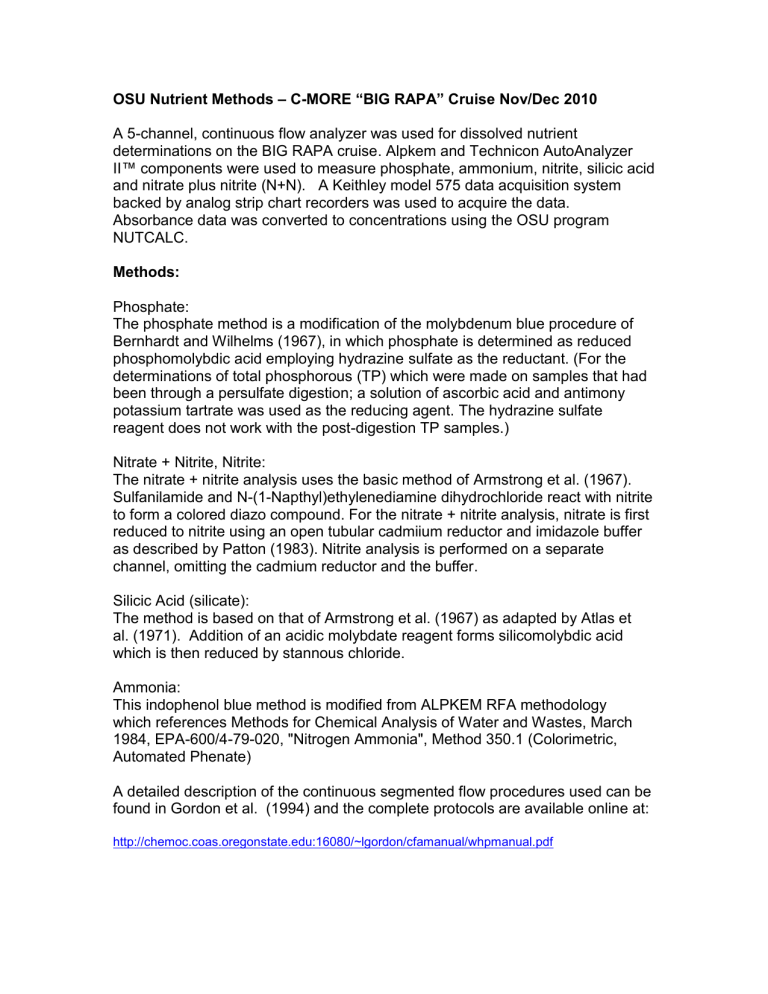
OSU Nutrient Methods
– C-MORE “BIG RAPA” Cruise Nov/Dec 2010
A 5-channel, continuous flow analyzer was used for dissolved nutrient determinations on the BIG RAPA cruise. Alpkem and Technicon AutoAnalyzer
II™ components were used to measure phosphate, ammonium, nitrite, silicic acid and nitrate plus nitrite (N+N). A Keithley model 575 data acquisition system backed by analog strip chart recorders was used to acquire the data.
Absorbance data was converted to concentrations using the OSU program
NUTCALC.
Methods:
Phosphate:
The phosphate method is a modification of the molybdenum blue procedure of
Bernhardt and Wilhelms (1967), in which phosphate is determined as reduced phosphomolybdic acid employing hydrazine sulfate as the reductant. (For the determinations of total phosphorous (TP) which were made on samples that had been through a persulfate digestion; a solution of ascorbic acid and antimony potassium tartrate was used as the reducing agent. The hydrazine sulfate reagent does not work with the post-digestion TP samples.)
Nitrate + Nitrite, Nitrite:
The nitrate + nitrite analysis uses the basic method of Armstrong et al. (1967).
Sulfanilamide and N-(1-Napthyl)ethylenediamine dihydrochloride react with nitrite to form a colored diazo compound. For the nitrate + nitrite analysis, nitrate is first reduced to nitrite using an open tubular cadmiium reductor and imidazole buffer as described by Patton (1983). Nitrite analysis is performed on a separate channel, omitting the cadmium reductor and the buffer.
Silicic Acid (silicate):
The method is based on that of Armstrong et al. (1967) as adapted by Atlas et al. (1971). Addition of an acidic molybdate reagent forms silicomolybdic acid which is then reduced by stannous chloride.
Ammonia:
This indophenol blue method is modified from ALPKEM RFA methodology which references Methods for Chemical Analysis of Water and Wastes, March
1984, EPA-600/4-79-020, "Nitrogen Ammonia", Method 350.1 (Colorimetric,
Automated Phenate)
A detailed description of the continuous segmented flow procedures used can be found in Gordon et al. (1994) and the complete protocols are available online at: http://chemoc.coas.oregonstate.edu:16080/~lgordon/cfamanual/whpmanual.pdf
Detection limits:
In colorimetric analyses of seawater macronutrients, the “detection limits” are a function of both the molar absorptivity of the compound being analyzed and of the dynamic range of concentration that is encountered. Thus if silicic acid is to be determined at concentrations of up to 100
μM, it will not be possible to simultaneously detect 0.05 μM. This is why the “detection limits for phosphate, nitrite and ammonium are generally lower than those for nitrate and silicate.
Additionally, because of the lower concentration ranges for ammonium, phosphate, and nitrite, 5 cm flow cells are used in the colorimeters for those analyses, while 1.5 cm flow cells are used for N+N and silicic acid. For the instrumental settings used on the BIG RAPA cruise, the following detection limits are considered to be the lowest resolvable concentrations for each analysis:
(Units are micromoles per liter in all cases.)
PO4 N+N Silicic Acid NO
2
NH
4
0.007 0.11 0.41 0.009 0.02
Concentrations less than these detection limits should not be considered statistically different from zero.
References:
Armstrong, F. A. J., C. R. Stearns, and J. D. H. Strickland. 1967. The measurement of upwelling and subsequent biological processes by means of the Technicon AutoAnalyzer™ and associated equipment. Deep-Sea Res. 14(3):
381-389.
Atlas, E. L., S. W. Hager, L. I. Gordon and P. K. Park. 1971. A practical manual for use of the Technicon Autoanalyzer ™ in seawater nutrient analyses; revised.
Technical Report 215. Oregon State University, Dept of Oceanography, Ref. No.
71-22. 48 pp.
Bernhardt, H. and A. Wilhelms. 1967. The continuous determination of low level iron, soluble phosphate and total phosphate with the AutoAnalyzer ™. Technicon
Symp., 1967, Vol. I, 386 pp.
Gordon, L. I., J. C. Jennings, Jr., A. A Ross, and J. M. Krest. 1994. A suggested protocol for continuous flow analysis of seawater nutrients (Phosphate, Nitrate,
Nitrite, and Silicic Acid) in the WOCE Hydrographic Program and the Joint Global
Ocean Fluxes Study. WHP Office Report 91-1. Revision 1, Nov 1994.
Patton, C.J. 1983. Design, characterization and applications of a miniature continuous flow analysis system. Ph.D. Thesis, Mich. State U., U. Microfilms
International, Ann Arbor, Mich. 150 pp.
